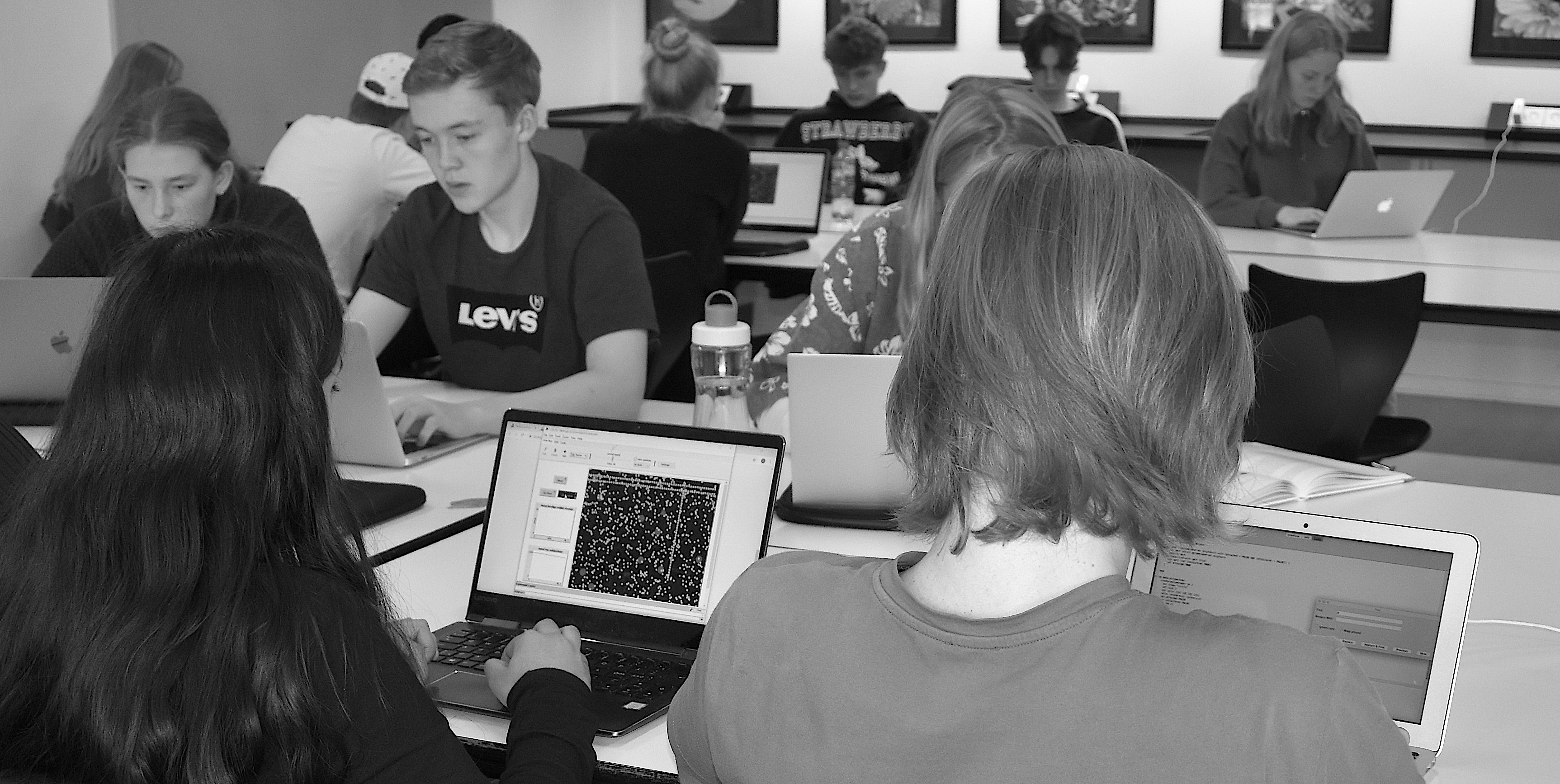
Computational
Thinking in
Life Science
CTLS v/ Line Have Musaeus

Computational
Thinking in
Life Science
CTLS v/ Line Have Musaeus
About
CTLS is working with computational thinking (CT) practices in STEM disciplines, and in life science (LS) in particular, as a way of representing CT in an educational setting.
“Understanding and creating models are fundamental skills for all pupils as it can be characterized as the skill that enable us to analyze and understand phenomena as well as design and construct artifacts.”
In: "Model-Based Thinking and Practice: A Top-down Approach to Computational Thinking" (Nowack & Caspersen, 2014)
The CMC approach can be used to design meaningful learning activities in which students obtain CT learning goals. The CMC framework integrates coding and modelling activities with content from specific subjects. The CMC approach serve both as a framework in the design phase of computer models and the pedagogy around using these models in teaching. The CMC framework represents a fruitful way for teachers and researchers to design and teach and for students to tinker with learning CT.
In: "Computational thinking in the Danish high school: Learning coding, modeling, and content knowledge with Netlogo."
Proceedings of the 50th ACM technical symposium on computer science education.
(Musaeus & Musaeus, 2019)
Computational modelling is widely used in biological science. However, there is a lack of evidence about how to teach computational modelling in biology and what the effects are on student learning. The CMC approach was used to design learning activities for high school students. In the study students showed statistically significant improvements in their biological knowledge and computational modelling knowledge compared to a control group. The study discusses how biology could be an important subject where students can learn computing concepts central in the endeavour to introduce computing in highschool education.
In: "Computational Modelling in High School Biology: A Teaching Intervention"
Journal of Biological Education
(Musaeus, Tatar, Musaeus, 2022)

"Computational thinking is the use of programming ⎯ as an extension of our mind ⎯ to experience and understand the world, to manipulate the world, and to create things that matter to us."
In: "Mindstorms: Children, computers, and powerful ideas" and "An exploration in the space of mathematics educations"
(Papert, 1980 and 1996)
"If a true computational literacy comes to exist, it will be infrastructural in the same way current literacy is in current schools. Students will be learning and using it constantly through their schooling careers and beyond in diverse scientific, humanistic, and expressive pursuits. Outside of schools, a computational literacy will allow civilization to think and do things that will be new to us in the same way that the modern literate society would be almost incomprehensible to preliterate cultures."
In: "Introducing and assessing computational thinking in the secondary science classroom"
(Swanson et al., 2019)
"The importance of computational thinking as a goal of science education is increasingly acknowledged. The representational affordances of computational tools are changing the way knowledge can be constructed, expressed, and understood across disciplines."
In: "Changing Minds: Computers, Learning, and Literacy"
(diSessa, 2000)

Contact
CTLS /v Line Have Musaeus
Mail: line@ctls.dk
CVR nr.: 40609881
© Ophavsret CTLS.